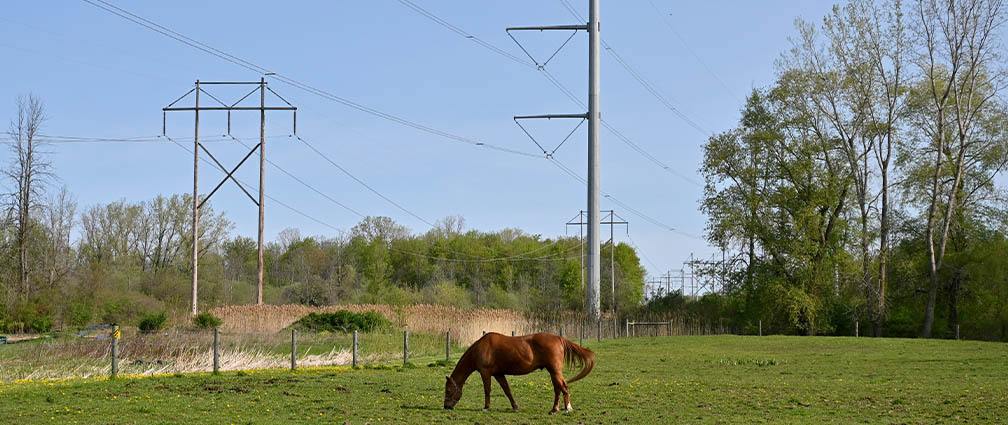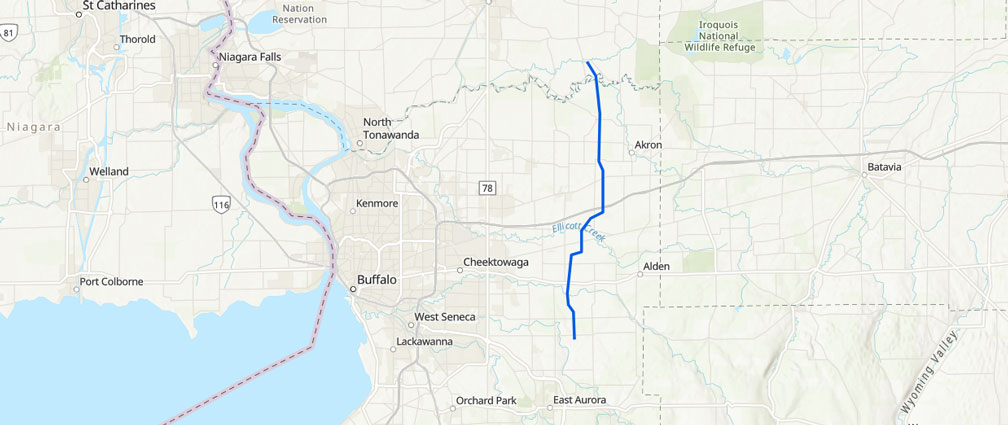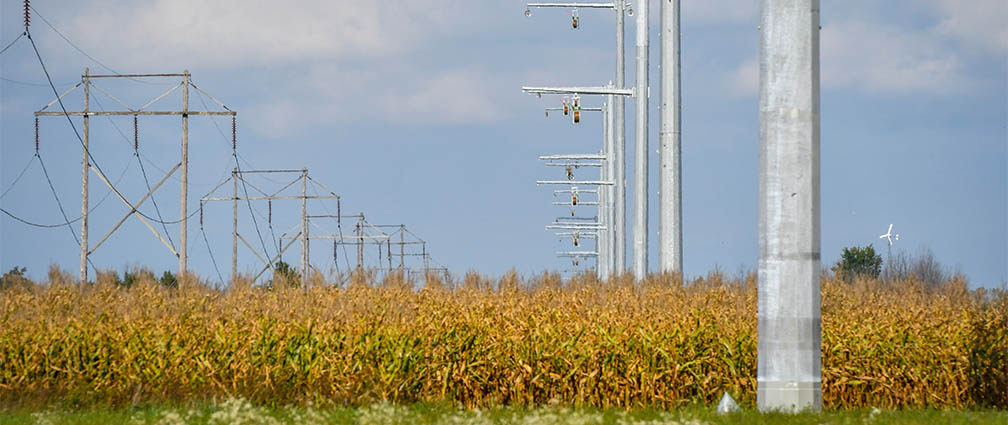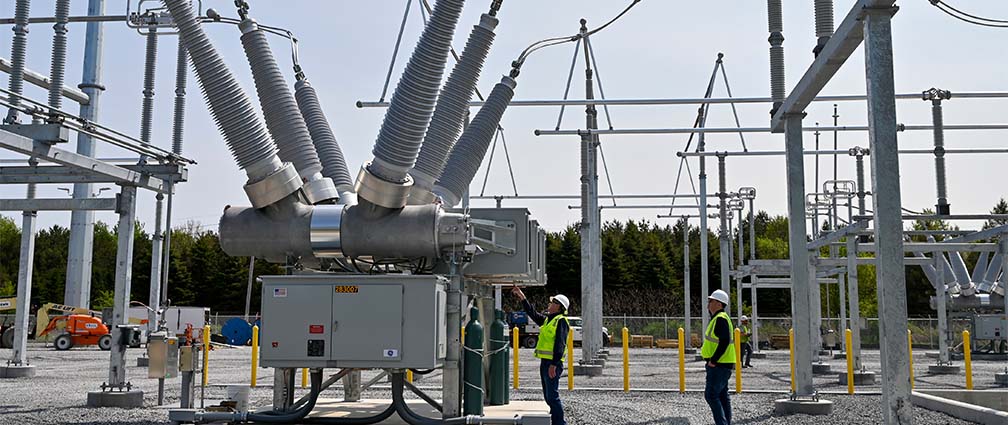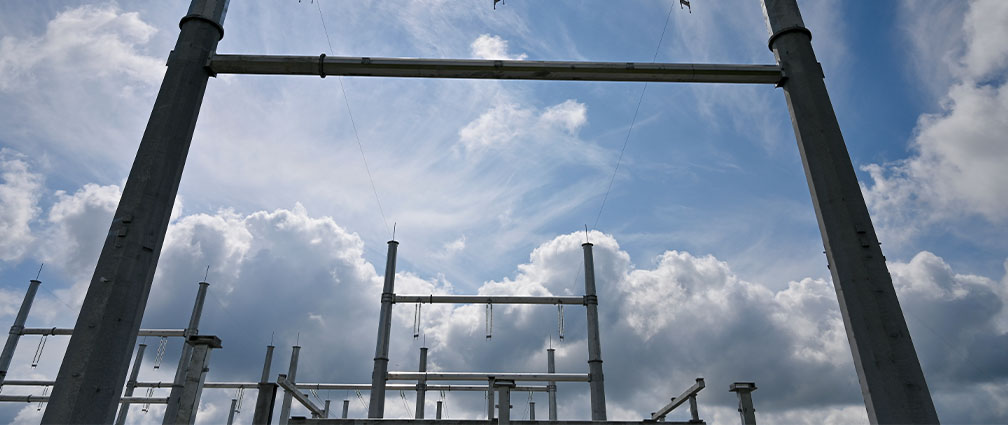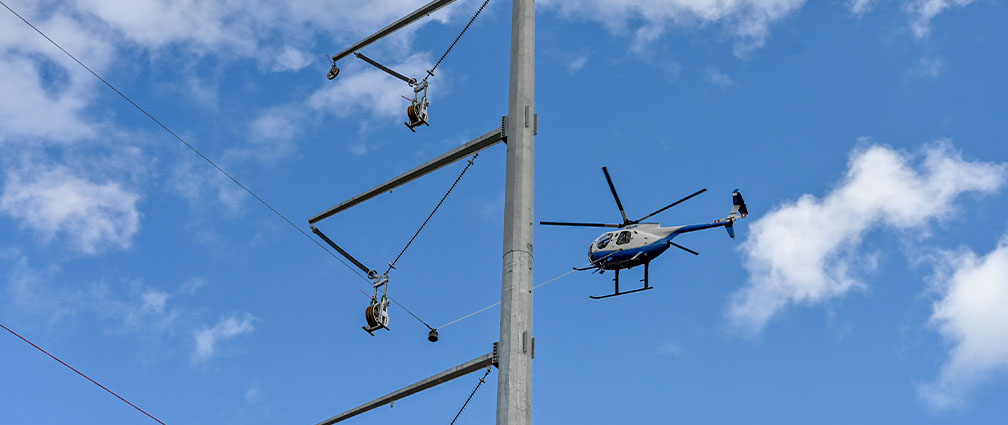Empire State Line
The Empire State Line was the first competitively bid transmission project awarded and built in the state of New York. The transmission line enables greater utilization of energy from the Robert Moses Niagara Hydroelectric Power Plant and electricity imports from Ontario, Canada.
NEETNY’s Empire State Line features:
- A 20-mile, 345 kV transmission line beginning in Niagara County in the Town of Royalton and traveling through Erie County via the towns of Newstead, Alden, Lancaster and ending in the Town of Elma.
- The new Dysinger substation, located at the north end of the transmission line in the Town of Royalton, features a 700 MVA phase angle regulator, making it the new 345 kV hub in western New York. It provides connection for seven 345 kV lines, adds capacity and creates grid efficiencies for transmitting electricity between the Robert Moses Niagara Hydroelectric Power Plant and utility customers throughout western New York.
- The new East Stolle substation, located at the southern terminus of the transmission line in the Town of Elma, is a 345 kV switchyard featuring a new shunt reactor.
- The Empire State Line’s phase angle regulator provides additional operational flexibility to the region’s 345 kV system.
Project construction began in March 2021 and was completed and in-service on June 1, 2022.
Community Benefits
The Empire State Line improves electric reliability across New York’s state electric grid and supports the state’s goal of maximizing the flow of energy in the region.
The line is capable of transmitting approximately 3,700 MW of energy and will provide cost savings to New York ratepayers by making the grid more efficient.

Local Tax Revenue
The Empire State Line provides additional tax revenue every year for local communities that supports schools, infrastructure and other vital services.
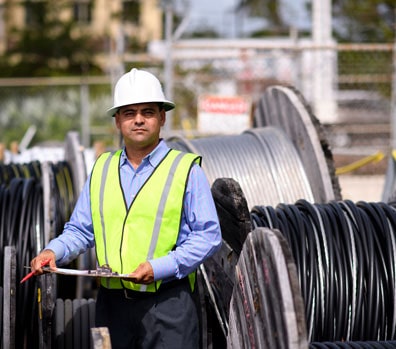
Job Creation
The Empire State Line employs approximately 15 operational and contract workers. During construction, the project employed approximately 150 workers, many sourced from local labor union organizations.
